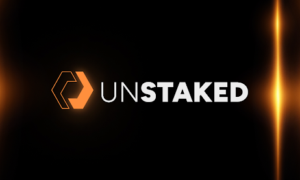The healthcare industry is constantly evolving, and with the rise of technology, there has never been a more exciting time to be in the industry. G Medical Innovations, a forward-thinking mobile health and digital health company is pushing boundaries and changing lives. With their cutting-edge medical monitoring solutions and comprehensive support for digital health projects, they are revolutionizing the way we approach healthcare monitoring and tracking. Find out more in this TechBullion interview with Yacov Geva, CEO of G Medical Innovations.
What is G Medical’s mission in the home health care and health monitoring industry?
Our mission is to be at the forefront of the digital health revolution. We strive to become a one-stop shop for both patients and physicians when it comes to monitoring and building patients’ personal electronic medical records (EMR). With our patented wireless ambulatory sensors, proprietary AI algorithms, at-home laboratory tests, and clinical portals for both patients and physicians, we are ushering in a new era of healthcare and wellness.
On one hand, we give patients the ability to monitor all their relevant vital signs and send samples to our CLIA-certified lab and receive answers only days later. Then we take all this data and information to build the patient’s own EMR, which is available to them anywhere, anytime.
At the same time, we give physicians the ability to see a broader picture of their patients so that they can better understand their condition and history and by that, better tailor treatment options and minimize mistakes.
We are empowering the next generation of consumers, patients, and providers to improve their quality of care and quality of life through better monitoring, better management, and better clinical and personal health outcomes.
Give us an overview of the main G Medical products, who they are for and what solutions they provide?
As a next-generation mobile health and digital health company, we develop and market clinical and consumer medical-grade health monitoring solutions. Our Prizma Care multi-sensor unit is an FDA-cleared medical device that transforms any smartphone into a monitoring device.
Prizma is actually an ecosystem consisting of the Prizma device and some additional peripheral devices for monitoring vital signs, including blood pressure, weight, blood glucose levels, and more. The ecosystem also includes smartphone applications and a personal portal for the patient and their physician.
All the information and data collected is used to build an electronic medical record (EMR) for the patient, which is available anywhere, anytime. The EMR also makes it easy for their doctor to see details including their medications, history of chronic diseases, clinical procedures and summaries of previous physician meetings, as well as any allergies, thus minimizing the potential for mistakes while optimizing their treatment plan.
In addition, we have two call centers (IDTFs – Independent Diagnostic Testing Facilities). These call centers receive transmissions from the Prizma device and its peripheral devices (under our RPM Remote Patients Monitoring) service, and analyze it and generate reports for the physicians.
Additional services performed by these call centers are our Ambulatory Electrocardiography (AECG) service which is an offline monitoring service for cardiac patients that uses the G Patch over a 7-14-day period. After the monitoring period is over, the doctor uploads the patient’s data to the cloud, and we analyze all that data to look for arrhythmias. The patient goes back to see their doctor to review the data and discuss potential treatment plans.
Another service is the MCT (Mobile Cardiac Telemetry) which is performed by our Spider device. The Spider is one of the best heart monitoring devices available today. It monitors for specific arrhythmias in real-time and transmits data during the event with pre- and post-event data to our data center. This information is crucial to the patient’s doctor to understand the reasons for the cardiac event.
More recently, we started offering at-home laboratory tests for a variety of conditions. A patient can purchase the kit online or in a store, collect their sample in the comfort of their own home, and then send it to our lab. They’ll get the results within days of receipt, and if needed, a physician will contact the patient about the results.
Some of the services we provide are based on codes from Medicare and private insurance so that patients can be reimbursed for everything and some of our services are out-of-pocket services and directed to the consumers.
What is the technology behind the Prizma portable multi-function vital sign monitor and tracking system, and what is the level of market demand for patient remote monitoring devices?
Our Prizma device gives patients the ability to monitor several criteria, including their blood pressure, weight, and glucose levels. They can use their own personal portals to review their EMR and data, identify trends, and share information with their doctor. We also generate reports for their physician so that they have everything they need to develop a treatment plan.
Prizma is an ecosystem that enables patients to build their own EMR, control it, and have it available to them all the time. When patients go see a new doctor who doesn’t know anything about them, they can share this EMR with that new doctor. It lists the patient’s medications, sensitivities, chronic conditions, procedures, and everything else the doctor needs to know about the patient so that they can better tailor a treatment for that patient—with a reduced potential for mistakes.
There is significant market demand for remote patient monitoring services. Markets and Markets estimates the global remote patient monitoring market at $53.6 billion in 2022 with a compound annual growth rate of 26.7% through 2027.
Tell us more about the mobile medical monitor for individuals, the unique features that make it different from other monitors in the market and how it works?
Prizma is our mobile medical monitoring device that can be compared to two other devices from competitors that monitor vital signs. Of course, there’s the Apple Watch, which most people are at least somewhat familiar with. It connects to an iPhone and can check for atrial fibrillation (AFib) via its ECG sensor and the patient’s oxygen saturation.
Additionally, AliveCor product offers a cardiac device capable of checking for AFib which is the main focus as it is one of the leading causes of strokes. AliveCor’s device also has blood pressure readings integrated into the device, and all data transmits to the application.
However, our device has more monitoring capabilities than competitors, including blood pressure, weight, blood glucose levels, ECG, body temperature, pain level, and stress.
But the most important thing, and the biggest difference between us and the other players is our call centers. For example, if you wake up with some concerning symptoms at 2 a.m., you can’t reach your doctor, so you have to decide on your own whether to go to the hospital or not. Since our monitoring services include a 24-hour call center, you can call and speak to someone who can review your results and consult with you and help you make a decision. It’s a completely different way of monitoring patients because it’s not just the device capturing data in an isolated way. Someone can always review that data — even at 2 in the morning — and help a patient decide whether to go to the hospital or wait until morning and call their doctor. In short, we focus on chronic disease management, but our competitors focus on much smaller problems.
Additionally, with our cardiac monitoring services, we generate reports on patient data within 48 hours of receiving it, although the industry standard is a full seven days.
We are also flexible in the integration process with clinics and hospitals to give them the customer experience they expect. Finally, our Spider and G Patch devices are among the best in the market. The offline AI algorithms we use to analyze data are the most advanced analysis available.
Looking at the patient monitoring technology for clinicians, how does it work and how is the technology better than what’s currently on the market?
From the clinician’s perspective, there are two models of patient monitoring technology. Small clinics analyze the data themselves and don’t need us. They have the necessary software, so they do the analysis.
The other model includes independent diagnostic testing facilities (IDTFs) with call centers that provide services to clinics and hospitals. Essentially, the patient goes to a clinic, and the doctor puts him on remote monitoring using an IDTF that sends the device to the patient. During that appointment, the clinic will hook up the patient to the device onsite and send them home with baseline data to compare to the data captured remotely and monitored by the IDTF.
How are these products improving human lives today, what level of response have you received on these products to date? Share any relevant use cases.
Our technology is better than most of the other devices on the market. We have the smallest devices, and patients have only one device that gathers all the data, so they don’t have to carry anything with them as they move around. Our devices are also waterproof and extremely accurate, so we don’t see a lot of false positives.
As far as more specific responses, those we get mostly come from doctors when they follow up with the patients after reviewing our reports and findings. By making the devices easier and more convenient for patients to use, we reduce the burden on them. In most cases, they’re being monitored to receive a diagnosis for a possible heart condition that’s usually asymptomatic.
When we do detect abnormal heart activity, physicians can act on it, either with medication or a procedure. Thus, our services help prevent more serious heart conditions because they enable early detection of abnormal arrhythmias.
Essentially, we help prevent the next stroke or heart attack that could affect a patient’s life forever. We also reduce costs for hospitals, insurance companies, and especially patients by performing remote cardiac monitoring and finding asymptomatic and infrequent abnormal arrhythmias before they become a major cardiac event requiring surgery and hospitalization.
Could you give us an overview of the G Medical Investor Relations, do you have more available opportunities for investors and partnerships?
Investors can visit Discord, a free social app, using this link https://discord.gg/wdWTCFPjKz to join the G Medical Innovations private community, which is specifically designed for $GMVD investors, traders, and potential investors. The channel contains all the due diligence on the company, fundamental and technical analysis, all company news, and any analyst reports and other third-party reports available. In addition, we invite people to participate in the active chat to discuss the company’s prospects and provide a forum for conference calls when management speaks to investors and prospective investors.
Where do we see the future of the health technology market and what are your future plans for GMedical? Do you have tips for our readers?
The future of health technology is very bright. The sky’s the limit, and more data means better algorithms. We have faith in technology, and doctors are gradually realizing what technology can offer. For now, though, it’s as if there’s a 100-year gap between doctors and technology. A well-known physician I spoke with a while back described the medical industry as a black hole, with all the technology in the industry being sucked into it.
Of course, health technology has to be safe and accurate, but people are increasingly moving toward the future. They’re turning to Google when they don’t feel well instead of just relying on doctors. At the same time, physicians want better monitoring and diagnostic tools.
The third piece of the puzzle is education. Technology makes all kinds of information about a patient’s medical condition available to them, but now they need a consultation to learn how to be healthier. The future is integrated medicine.
My advice is to keep asking questions, don’t take anything for granted, and review, read, and learn as much as you can. Keep searching for the next technology that will help you treat yourself better.
For more information, visit the website: https://gmedinnovations.com/



































